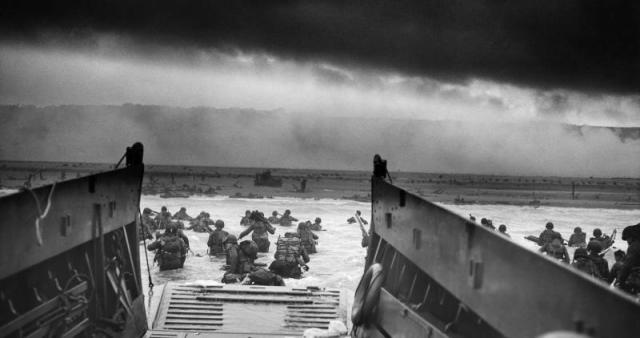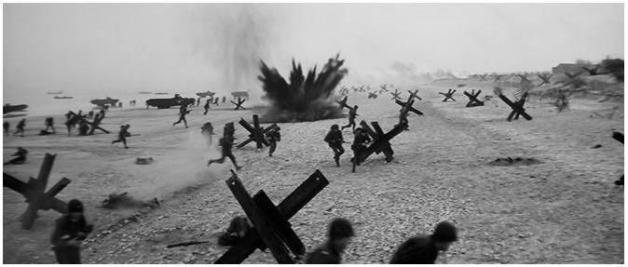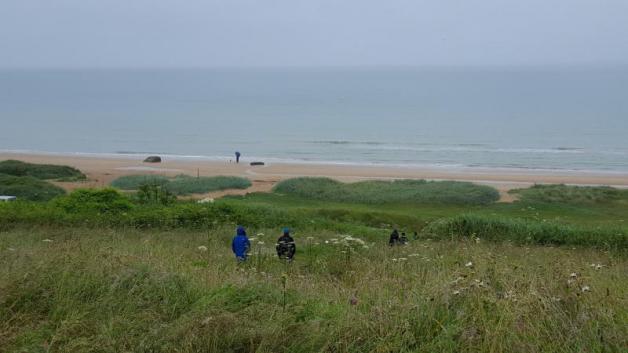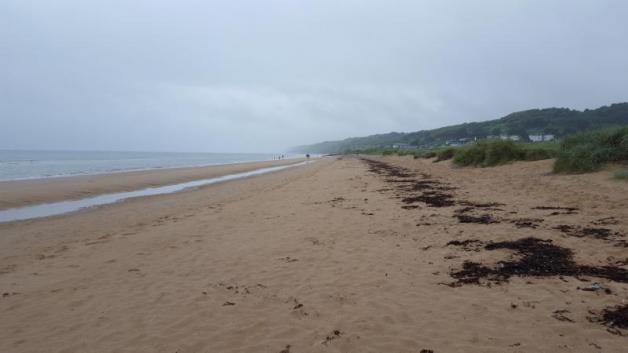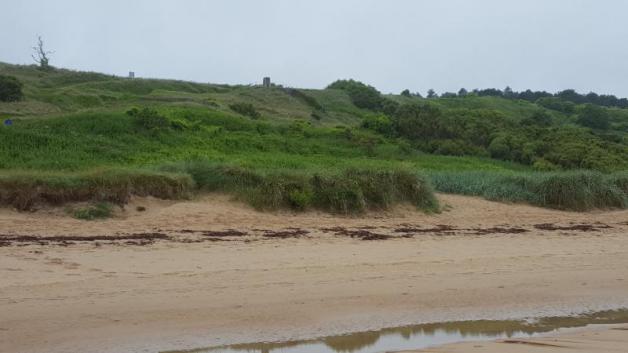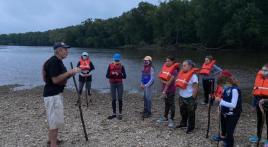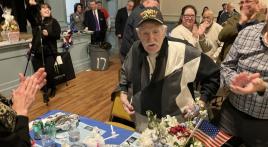In July of 2016 I joined a tour group and took an 11-day trip to Europe to tour World War 2 battle sites in France, Belgium and Germany – places that some of our Morgan County veterans once walked on or flew over. This series of articles is a summary of what I saw and learned there as I followed the path of American heroes who answered the call of duty over 75 years ago.
Normandy is one of the 13 mainland regions in France. It is located in the far north of the country directly across the English Channel from England. This coastline was the chosen location for the massive Allied invasion of German occupied France on D-Day.
The planners for Operation Overlord (code name for the Normandy invasion) focused their amphibious landings on 5 beaches that stretch across Normandy’s coastline.
The beaches were divided into 5 sectors. Each sector was assigned a code name: Utah, Omaha, Gold, Juno and Sword.
U.S. forces were assigned to land at Utah and Omaha. The other three beaches were divided up between British, Canadian and Free French Forces.
In the early morning hours of Tuesday, June 6th, 1944, a vast array of 1,028 Naval vessels consisting of minesweepers, transport ships, bombardment ships, anti-submarine ships and patrol craft approached the beaches along Normandy.
Aerial and naval bombardments preceded the amphibious landing by 40 minutes. Overcast conditions, however, limited the effect of the bombings as both planes and ships missed their intended targets and ended up dropping their bombs further inland behind the German defenses. The result was that most of the German soldiers along the shore were not hit and, equally as bad, the anticipated bomb craters along the shore were missing, denying U.S. forces places to seek cover while they advanced.
As the transport ships drew closer to land, the men of the 29th and 1st Army Divisions along with some companies of U.S. Army Rangers climbed down from the transport ships’ hulls on cargo nets and boarded smaller landing crafts for the dangerous ride up to the shore.
Omaha Beach proved to be the deadliest of the 5 beach landings. This coastline stretches out for 5 miles and is bordered by Sainte-Honorine-des-Pertes to the east and Vierville-sur-Mer to the west.
On July 3rd of this past summer our tour group walked down to Omaha Beach on an overcast day. It looked peaceful with its smooth light tan sand. But there was nothing peaceful about the beach on June 6th, 1944. It was a place of terror.
When the U.S. forces arrived on the beach they had a long distance to go before they could reach any defensive position. They landed around 6:40 am, a few hours into low tide and had approximately 1,000 feet of open shore ahead of them.
Smoke, mist, clouds, and a hailstorm of bullets and bombs enveloped them from every side. The men, weighed down by heavy gear, had to traverse around a myriad of beach obstacles laid down by the Germans to deter the landing craft from getting too close and to make it difficult for tanks and other vehicles to advance.
Omaha beach sits at the base of cliffs and undulating bluffs. This elevation is what makes the beach distinct from the other 4 landing beaches at Normandy. It is also what made this beach landing the deadliest one of all.
Germans of the 352 Infantry Division were positioned all throughout the cliffs and bluffs, tucked into the nooks and crannies of the rolling hillside with their weapons pointed down at the coastline. They had key defensive positions. And from those hidden and protected positions they rained down the fire of bullets and bombs upon the approaching Allied invasion forces.
Those who initially survived getting on Omaha beach had the challenge of moving up the steep bluffs while the Germans shot at them. They had no choice but to advance into the spray of bullets and bombs to confront the enemy that was firing upon them.
On that overcast July day I stood at the water’s edge and tried to imagine all the ships out in the English Channel making their advance toward land. What a spectacular sight that must have been! I wondered what the U.S. soldiers were thinking as they rode in the crowded landing crafts toward a shoreline that would soon engulf them in vicious combat. How frightening that must have been!
As I walked along the beach I picked up a few stones to keep as mementos, precious symbols of an historic battle. I wondered if perhaps they had been stepped on or kicked up by the landing forces 70+ years ago.
I listened and tried to hear the now distant sounds of voices from those who once fought here and those who once died here. But all I could hear was the wind from the English Channel blowing across the sand and showering us with a light mist.
This beach is hallowed ground. I felt its deep significance as I walked along its now peaceful shore. The blood of many American soldiers had seeped into this sand. The bodies of many had been strewn across it; the injured and the dying.
Ernie Pyle, the well-known World War 2 correspondent, wrote about the carnage on this beach in one of his columns home to the U.S. He was walking along its shores on June 16th, ten days after the initial landing when he reported in an article he entitled: The Horrible Waste of War, “I took a walk along the historic coast of Normandy in the country of France. It was a lovely day for strolling along the seashore. Men were sleeping on the sand, some of them sleeping forever. Men were floating in the water, but they didn’t know they were in the water, for they were dead.” (Article was published by Scripps-Howard News Service).
At the end of June 6th, 1944, the American forces had carved out a tenuous control of the beach head; but at a high cost. Over 34,500 Americans had landed on the beach. And over 4,000 of them, some from the soil of Indiana, had died or been wounded there. The brown sand had turned red with the blood of liberators who stormed the beach, only to tragically become a part of it in death.
Nevertheless, a critical toehold into France had been gained in the sacrificial landing. And from that toehold the rest of the invasion inland would continue.
Next Week: Utah Beach and Point Du Hoc
Ronald P. May, USN (ret.), is author of the book “Our Service, Our Stories.” He helps veterans share and preserve the stories of their military service. For more information or to tell your story, contact May at 317-435-7636 or by email at yourlifestory@live.com. You can also follow him on Facebook at Our Service, Our Stories.
